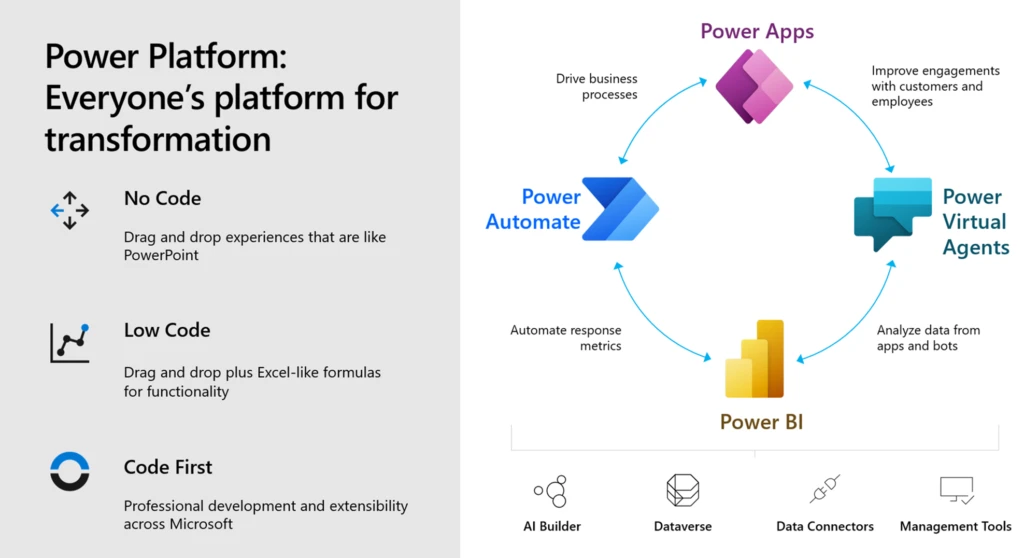
How the public sector can streamline operations and innovate with intelligent automation
I’ve worked for IT companies in the public sector for over 25 years. As a consequence, I’ve seen all the latest exciting trends that promise to save money and deliver efficiency. However once delivered, the solutions are often not always what they promise to be. For example, intelligent automation such as Robotic Process Automation (RPA) is one of the latest trends that genuinely promises a lot. But has it yet delivered on its full potential for the public sector and Central Government organisations?
At Microsoft, we support Central Government organisations to enable employees to automate their workflows and business processes. We focus on everyone from civil servants on the frontline to technology experts. Our platform brings together Robotic Process Automation (RPA) and Digital Process Automation (DPA) into a single cloud-based solution. As a result, it has recently been named a leader in the 2021 Forrester Wave for Robotic Process Automation.
The public sector needs to respond to new challenges such as increasing digital services to citizens and giving civil servants more resources on the frontline. Meanwhile, organisations face a skills shortage and increased demands to be more responsive. This is a great opportunity to look at RPA. But how can we ensure it delivers what you need?
Streamline operations with intelligent automation
RPA turns manual tasks into automated workflows by recording and playing back human-driven interaction with systems that don’t support API-based automation. What this means is you can automate processes and exchange data with legacy, on-premise software. What happens when you combine RPA with AI and digital process automation (automated workflows across cloud services)? You get an end-to-end solution. One that creates reusable workflows or processes you can use throughout the organisation on a secure platform. This reduces the time it takes to complete tasks and reduces paper-based processes. Additionally, it frees up employees to focus on strategic work or spend more time with citizens.
Microsoft Power Platform is an intuitive, extensible platform of low-code tools. It empowers all users to collaborate and build transformational solutions.

It has seamless integration to Microsoft 365, Dynamics 365, Azure and more than 400 native connectors. This means users can break up data silos, surface insights and create flexibility in business processes. You can build all these solutions in-house. As a result, you’re reducing your IT spend while giving yourself more capabilities.
For instance, the Care Quality Commission (CQC) is responsible for monitoring the quality of care providers across England. To reduce manual paper processes, they built a low-code app with Power Apps for inspectors to use during site visits. They can complete reports quickly and easily onsite. In the meantime, that data flows back to connect to other inputs, such as online reviews, and social media. As a result, this delivers a more holistic view of care providers to CQC.
Gain new insights and reduce silos with intelligent automation
 One of the benefits from having intelligent automation is the insights you can gain from it. As a result, you will be able to provide better services to citizens, improve employee wellbeing, and create new innovations.
One of the benefits from having intelligent automation is the insights you can gain from it. As a result, you will be able to provide better services to citizens, improve employee wellbeing, and create new innovations.
To help decide which tasks to automate, we have introduced Process Advisor, a new process mining capability in Power Automate. It helps organisations better understand how their employees work. Process maps show the steps, repetitions, and provide out of the box analytics. Using these insights, organisations can decide which tasks to automate breaking down the barriers that might make it difficult for an organisation to identify where they might benefit the most from automation.
For example, Colchester Borough Council uses Microsoft to help deliver their services to 192,500 residents. They have used insights collected via Power BI to uncover areas of their Borough that need extra resources or information. With the help of Power Apps and Power Automate, staff can access, update, and share case and service information. They can do this securely via desktop and mobile devices in real-time.
Keeping your data safe
The public sector often deals with sensitive personal information. This means it’s important you ensure your technology is secure and compliant. Power Platform is built on Microsoft security standards. This includes the strong security and compliance features of Microsoft Azure and Microsoft Azure Active Directory. Azure benefits from multi-layered security with integrated controls in hardware and firmware. Admins can monitor usage and business impact across the entire tenant. This helps securely deploy and support a low/no code platform. Power Platform monitoring tools help you gain full visibility of what employees are building. At the same time you have visibility over the use of these apps and flows. This is a key difference from other IT development projects. Traditionally, IT teams can struggle to gain a full understanding of usage and data access.
Additionally, there are many targeted security and governance capabilities. These enable environment and tenant-wide data exfiltration governance as well as fine-grained data loss prevention rules and support.
Empowering the public sector with intelligent automation
 According to a Forrester Total Economic Impact of Power Automate, using an intelligent automation solution in the cloud can deliver a three-year return on investment of 199 percent. In order to face unprecedented challenges and changes that the UK is facing, we built an Intelligent Automation Blueprint to stimulate thought and provide ideas for central government.
According to a Forrester Total Economic Impact of Power Automate, using an intelligent automation solution in the cloud can deliver a three-year return on investment of 199 percent. In order to face unprecedented challenges and changes that the UK is facing, we built an Intelligent Automation Blueprint to stimulate thought and provide ideas for central government.
The public sector needs to identify the opportunities for automation, as well as the technology to deliver it. Power Automate is helping reduce repetitive, manual, time-consuming tasks so civil servants can focus on strategic work. Ultimately, this is helping deliver better services to citizens.
Power Automate can deliver quick wins. But it should be considered a core part of a long-term strategy to ensure your organisation is well equipped to become digitally transformed.
Find out more
A blueprint for intelligent automation
Learn how to meet challenges with Power Platform
About the author
 Andy has worked in delivering IT and Business solutions to Public Sector for the last 26 years. He has a passion for business improvement. Andy currently leads a team in Microsoft which provides cloud services to Central Government and Public Safety/National Security customers.
Andy has worked in delivering IT and Business solutions to Public Sector for the last 26 years. He has a passion for business improvement. Andy currently leads a team in Microsoft which provides cloud services to Central Government and Public Safety/National Security customers.




